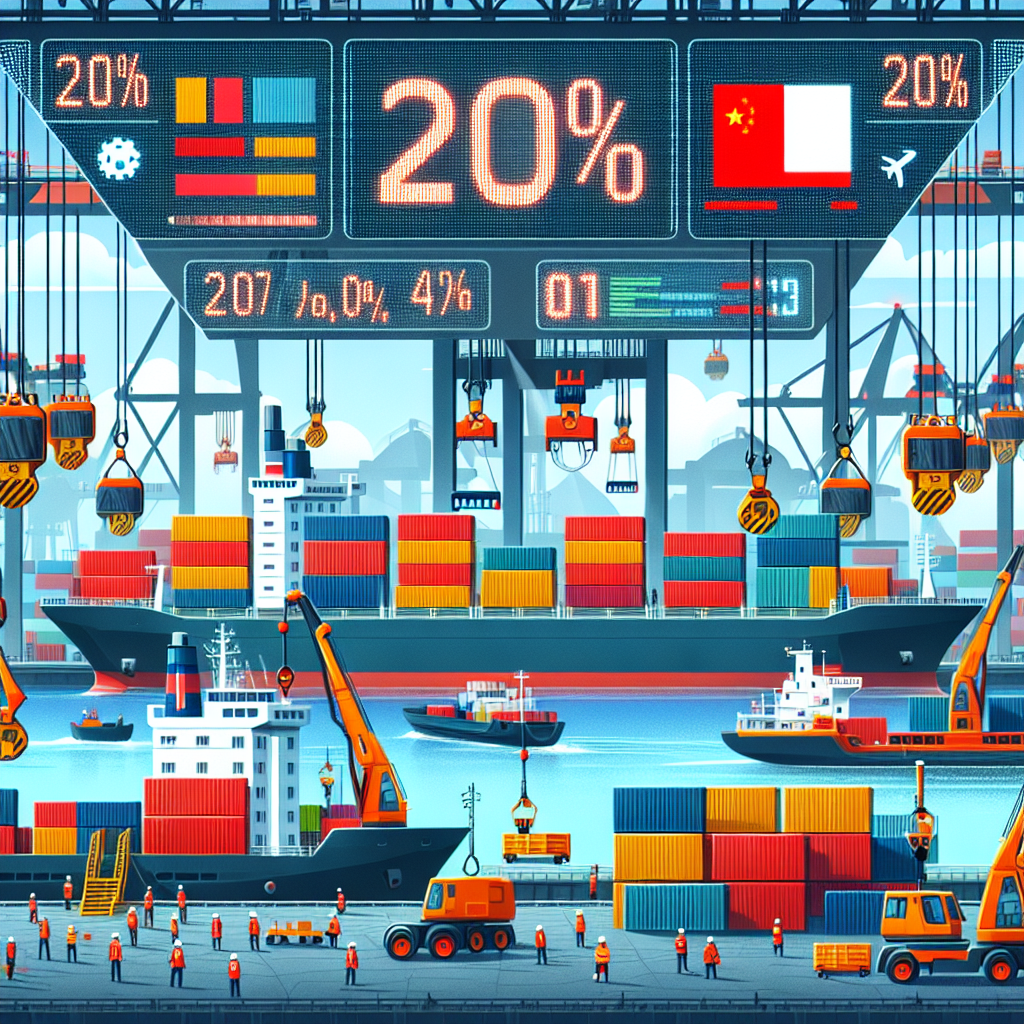The global shipping industry’s top executives have expressed concerns over the potential impact of the United States charging port fees on Chinese vessels, which could result in a significant increase in costs, equivalent to an additional $600 to $800 per container. Data shows that around 20% of U.S. import trade is transported by Chinese vessels.
Soren Toft, Chief Executive Officer of Mediterranean Shipping Company (MSC), recently acknowledged at the Transpacific Maritime Conference (TPM) in Long Beach, California, that “if these charges are implemented in their current form, it will have significant consequences.”
Toft also serves as the Chairman of the World Shipping Council and stated that the proposed fees by the Trump administration could cost the industry over $20 billion, resulting in an additional $600 to $800 per container in costs.
“So the impact is very, very significant,” he told CNBC.
As the largest shipping company in the world, MSC has 24% of its fleet manufactured in China, with 92% of its new vessel orders being made in China.
According to a draft released by the U.S. Trade Representative’s Office in February, shipping companies face charges of up to $1.5 million per call for Chinese-made container ships docking at U.S. ports.
For operators owned by China (such as COSCO Shipping), each ship could face service fees of up to $1 million. For non-Chinese shipping companies with Chinese-built vessels, service fees for every port call in the United States could go up to $1.5 million.
Additionally, for shipping companies with over 50% of their fleet manufactured in China, including vessels expected to be delivered within the next 24 months, service fees of up to $1 million per ship per call at U.S. ports would be imposed. If the vessels are U.S.-built, the fees are refundable annually, with a maximum refund of $1 million per call.
The U.S. government’s resistance against China’s growing dominance in the shipbuilding industry began during the Biden administration and is being escalated by the Trump administration, preparing to charge high port fees on Chinese ships. This is part of the president’s expanding global economic and trade war.
Last week, Trump announced during a Congressional speech that a new shipbuilding office would be established at the White House to provide special tax incentives to bring more shipbuilding business back to the U.S.
On Tuesday (March 11), the U.S. House Armed Services Committee’s Subcommittee on Seapower and Projection Forces held a hearing on the U.S. shipbuilding industry. The U.S. Trade Representative’s Office plans to hold a public hearing on fees for Chinese ships docking in the U.S. on March 24.
The significant increase in orders of Chinese ships reflects the U.S. government’s concerns. The Biden administration believes that China’s shipbuilding industry’s advantage stems from low-cost strategies, low labor standards, and artificially suppressed labor costs, creating unfair competition in shipping, logistics, and shipbuilding industries.
With a large portion of U.S. import trade being transported by Chinese vessels, the proposed fee by the U.S. is expected to have a major impact on the world’s leading shipping companies, both economically and structurally.
According to VesselBot data, 21% of U.S. import trade in 2024 arrived on Chinese-made ships.
Based on Lloyd’s List Intelligence compiled data, aside from MSC having a large fleet of Chinese-built ships, the second-ranked shipping company Maersk has 20% of its fleet built in China, with 79% of its orders coming from China. The third-ranked CMA CGM has 41% of its fleet manufactured in China, with 54% of its orders involving Chinese-built ships.
According to the Hudson Institute’s data, approximately 70% of Chinese-owned ships are registered in China. Among the top ten ship-owning countries, only 27% of the fleets sail under their national flags. Slightly over 43% of the U.S. fleet is registered in the U.S.
USTR’s proposed draft also imposes restrictions on U.S. exports. The plan stipulates that at least 1% of shipping goods exported to the U.S. in the initial stage must be carried by U.S.-flagged ships operated by U.S. companies, gradually increasing to 15% within seven years, eventually including requirements for ships built in the U.S.
Lloyd’s List Intelligence analysis suggests that the latest U.S. regulations may lead some shipping companies to adjust corporate structures to circumvent these new fees, such as allocating Chinese and non-Chinese built ships to different subsidiaries and only allowing companies without Chinese-built ships to dock in U.S. ports.
The report noted that if this trend intensifies, the global shipping market may further fragment, creating a new landscape of “parallel fleets.”
To reduce the impact of charges, shipping companies may need to minimize port calls in the U.S. and transfer containers to major ports. For instance, container routes from Asia to the U.S. East Coast usually stop at two to three U.S. ports, potentially resulting in each voyage incurring stop fees of $2 to $3 million.
Toft mentioned they might consider skipping the Oakland port and diverting containers to alternative ports like Los Angeles and Long Beach. However, he’s concerned that adjusting port call strategies could lead to challenges in matching truck and rail equipment to the distribution points of goods promptly. This shift in port strategies could affect port capacity (throughput), causing congestion in some ports and underutilization in others, ultimately impacting the entire supply chain.
Currently, U.S. ports are not operating 24/7. Toft estimates that the effective working time of U.S. ports may only be at 60% during the working week.

